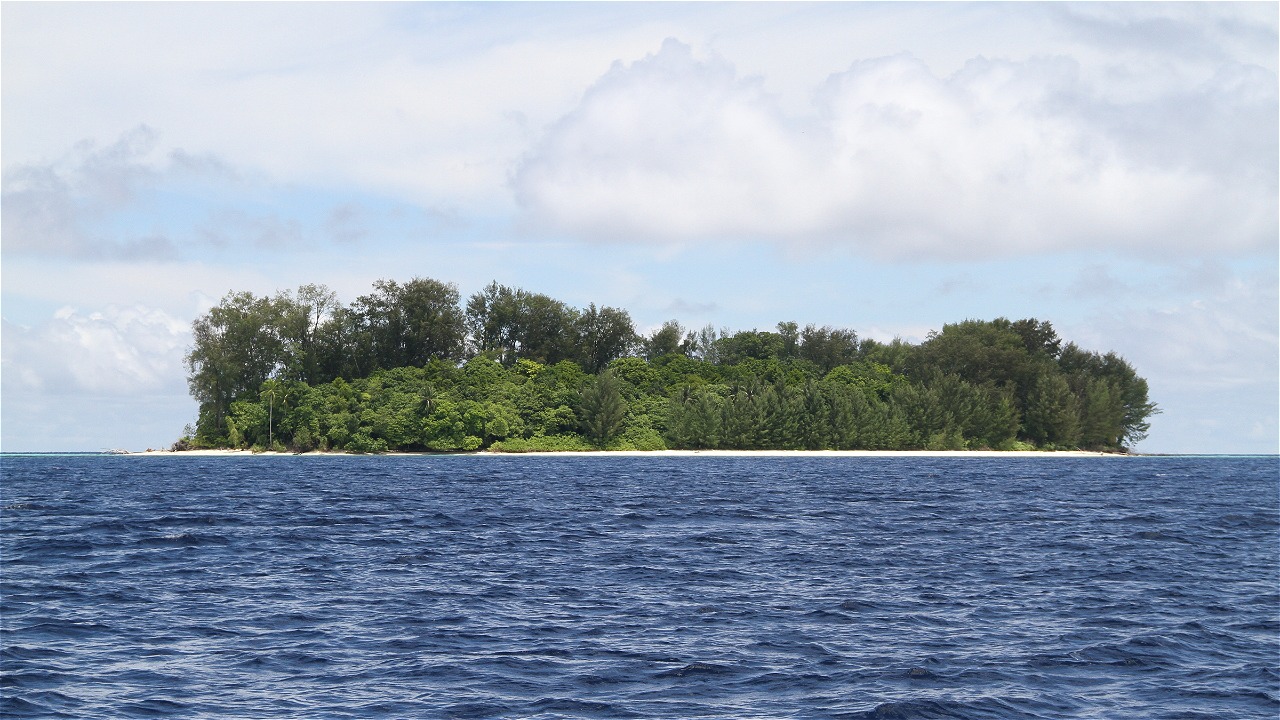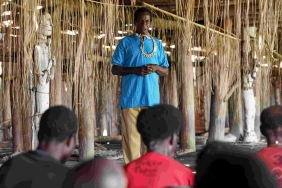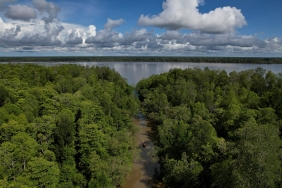ROON, DEVELOP CONSERVATION AREA ZONING RULES
By: Feronika Mahonas
We traveled to Yende Village, one of the villages on Roon Island with a population of around 635 people. Along the way we stopped at several mangrove groves. Mr. Pri (our group leader from BBTNTC staff) started taking some documentation
"This is the potential of Roon Island, the mangrove ecosystem!" said Mr. Pri.
The trip to the village where the majority of the population are fishing and molo or diving with the main commodities of reef fish, sea cucumbers, lobsters, lola and clams takes three hours. Upon arrival, we were greeted by Mr. Waromi and directed to Niab village.
Niab is one of the expansion villages from Yende, which is ten minutes by sea from Yende. In Niab, we coordinated with the head of Niab Village, Benhard Awi, to hold a casual discussion meeting with some of the village officials there. The topic was zoning and the layout of the area.
"We do have a place to live there, but if it is important for our future, we will definitely protect it well, but it must be accompanied by our customary rules and currently Sasi is the only village law recognized by our community!" explained Mr. Benhard Awi at that time.
Meeting with Niab Community
The meeting with the Niab village community ended with several recommendations, among others; it is necessary to re-survey important places for spawning fish, clams, lobsters and sea cucumbers. The results of the survey need to be consulted with the community to be determined by following customary or church rules.
The meeting managed to gather approximately 15 community leaders consisting of village officials, conservation cadres and honorarium teachers there. Unfortunately, there were no women representatives. Mr. Prihatna immediately opened the meeting by raising the story of the zoning rules in the Auri islands. Similar to Niab Village, they hoped for a village regulation recognized by the local community to replace the existing zoning regulation. However, what is important is basic and scientific information about the reasons why the place needs to be closed from their fishing activities, because the reality is that currently the protected locations stipulated in the zoning rules are not complied with and remain the target locations for their livelihoods.
The next day I woke up with a heavy head and heard the voice of our team leader telling me that the bad weather was the reason for postponing the trip back to Wasior City. Finally, I decided to walk around the village to see and record the activities of the community.
During the observation, I started to dig up information about the condition of the school at that time. As it turned out, the school had no special funds for operations, and there were only honorarium teachers with a high school education level. The teaching materials were from old books and the principal had not visited the school for several months. The school does not have chalk or markers for teaching, they borrow the elementary school room because the new school building that was built has not been inaugurated until now.
Not far away there was a group of children playing in a hut built by the local community as a place to relax. Then I invited them to enter the hut to study together.
During the learning process, I thought what did they learn at school? What kind of education do they get nowadays, even spelling the word "home" is difficult for them.
Back to Wisor City
We finally departed at 3:00 p.m., after the wind died down and the tide began to rise. Similar to the first trip, we visited several mangrove areas in the surrounding villages. The trip to Wasior, which was supposed to take 2 hours, now took 4 hours with waves at the end of the trip, not easy to get through.
Just like the life of the Roon community is not easy to get through, but there are natural conveniences available. As said by Mr. Penias Ayamiseba (Yende village official),
"From the past, a lot of assistance has been given to our community, but the standard of living has not changed, what is the cause fero?" asked Mr. Penias.
I just gave a brief opinion that just like salt thrown into the sea, the results will not be seen because it is equally salty, like the assistance that is currently being disbursed by the government which hopes to change the standard of living of the community, but is not accompanied by building human character and understanding, eventually the assistance runs out without a trace in the community. It takes awareness and education as well as regular mentoring for Yende residents. Hopefully one day someone will start to be touched to build Papuan society through adequate education so that the "salt" is not thrown in the ocean but used to cook vegetables so that they taste better.





